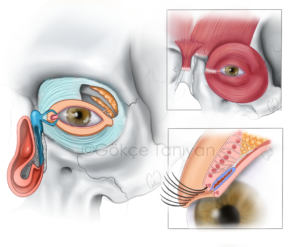
In the intricate world of medicine, where precision and clarity are paramount, medical illustration stands as a vital bridge between complex scientific information and human understanding. This specialized field blends the detailed knowledge of life sciences with the creative skill of visual arts, resulting in stunning and accurate depictions of medical and biological subjects. But what exactly is medical illustration, and why is it so important?
What is Medical Illustration?
Medical illustration is the practice of creating visual representations that depict medical and biological concepts. These illustrations are not just simple drawings; they are meticulously crafted visuals that convey intricate details about the human body, medical procedures, disease processes, and more. Medical illustrators play a crucial role in translating complex medical jargon and data into images that can be easily understood by a broad audience.
The Role of Medical Illustrators
Medical illustrators are professionals who typically have a dual background in life sciences and visual arts. This unique combination allows them to understand the scientific content and then translate that information into clear, accurate, and engaging visuals. They are skilled in various techniques, ranging from traditional hand-drawn illustrations to modern digital art, 3D modeling, and even animation.
Where are Medical Illustrations Used?
The applications of medical illustration are vast and varied. Some common uses include:
- Textbooks and Educational Materials: Medical illustrations are essential for textbooks and learning resources, helping students and healthcare professionals grasp complex anatomical structures, physiological processes, and medical procedures.
- Research Papers and Journals: In scientific publications, medical illustrations provide clear visual explanations of research findings, enhancing the communication of ideas and data.
- Patient Education: Visual aids created by medical illustrators help patients understand their conditions, treatments, and surgical procedures, leading to better-informed decisions and improved outcomes.
- Medical Marketing and Advertising: Illustrations are also used in medical marketing materials, advertisements, and presentations to effectively communicate the benefits of medical products and services.
The Process of Medical Illustration
Creating a medical illustration is a meticulous process that often involves close collaboration with healthcare professionals. Here’s a glimpse into how it works:
- Research and Consultation: The illustrator begins by researching the subject matter and consulting with medical experts to ensure accuracy. This step may include reviewing medical texts, images, or even observing surgeries.
- Sketching and Drafting: Initial sketches are made to outline the composition and key elements of the illustration. These drafts are reviewed and refined with input from medical professionals.
- Final Rendering: Once the drafts are approved, the illustrator creates the final artwork. This can be done using various techniques, including digital tools like Adobe Illustrator, Photoshop, or 3D modeling software.
- Review and Revision: The final illustration is reviewed for accuracy and clarity. Any necessary revisions are made to ensure that the image effectively communicates the intended information.
The Importance of Medical Illustration
In an era where visual communication is increasingly important, medical illustration stands out as an indispensable tool in the medical field. It not only aids in education and communication but also enhances the quality of healthcare by improving the understanding of complex medical concepts. For students, professionals, and patients alike, these illustrations offer a clearer, more accessible view of the intricate workings of the human body.
Conclusion
Medical illustration is a fascinating intersection of art and science. It requires a deep understanding of both anatomy and artistic techniques, making it a highly specialized and valuable profession. Whether it’s helping a student learn about human anatomy, guiding a surgeon through a complex procedure, or explaining a diagnosis to a patient, medical illustrations play a crucial role in bridging the gap between knowledge and comprehension.
As medicine continues to evolve, so too will the field of medical illustration, constantly pushing the boundaries of how we visualize and understand the human body and its many mysteries.
